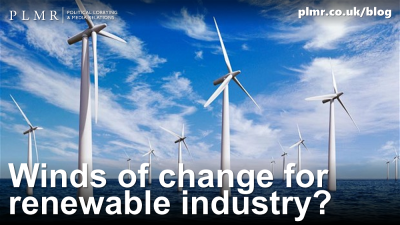It has been a turbulent time for the renewable energy industry under the previous coalition, and current Conservative government. With cuts to available subsidies across the board, and earlier than anticipated, critics argue that former Prime Minister David Cameron had fallen well below his vow to lead the ‘greenest government ever’. This didn’t look set to improve with the arrival of Theresa May, given the folding of the Department for Energy and Climate Change, showing the reduced focus that renewable energy could now be shown in this government.
However, earlier this week, there was a glimmer of hope for part of the industry after phase two of Hornsey, “world’s biggest offshore windfarm”, gained approval from Business and Energy Secretary Greg Clark. Talking about the decision, Clark said:
“The UK’s offshore wind industry has grown at an extraordinary rate over the last few years, and is a fundamental part of our plans to build a clean, affordable, secure energy system.
Britain is a global leader in offshore wind, and we’re determined to be one of the leading destinations for investment in renewable energy, which means jobs and economic growth right across the country.”
This announcement has come as welcome news to green campaigners and those who are concerned about the continued trajectory of Theresa May’s government’s energy policy. May’s first month in charge has also included uncertainty over the future of the Hinkley Point C nuclear project after she delayed signing off the new £18bn power plant last month. This indecision was followed by comments from the Crown Estate, who argued that this review would provide the opportunity to assess low carbon technologies, given that offshore windfarms will be on course to meet 10% of the UK’s electricity by 2020.
Government data published earlier this month showed that renewables generated 25.1% of the UK’s electricity in the first quarter of this year. Around half of that came from on and offshore wind combined.
Whilst the government’s attitude towards onshore wind and solar are unlikely to change in the near future, the approval of Hornsey Phase Two will provide some some relief to those in the renewable sector that larger infrastructure projects still stand a chance at approval. However, the decision surrounding Hinckley Point C will be the next test in our energy strategy, and will offer a significant indicator to investors whether the UK is truly open for business.




